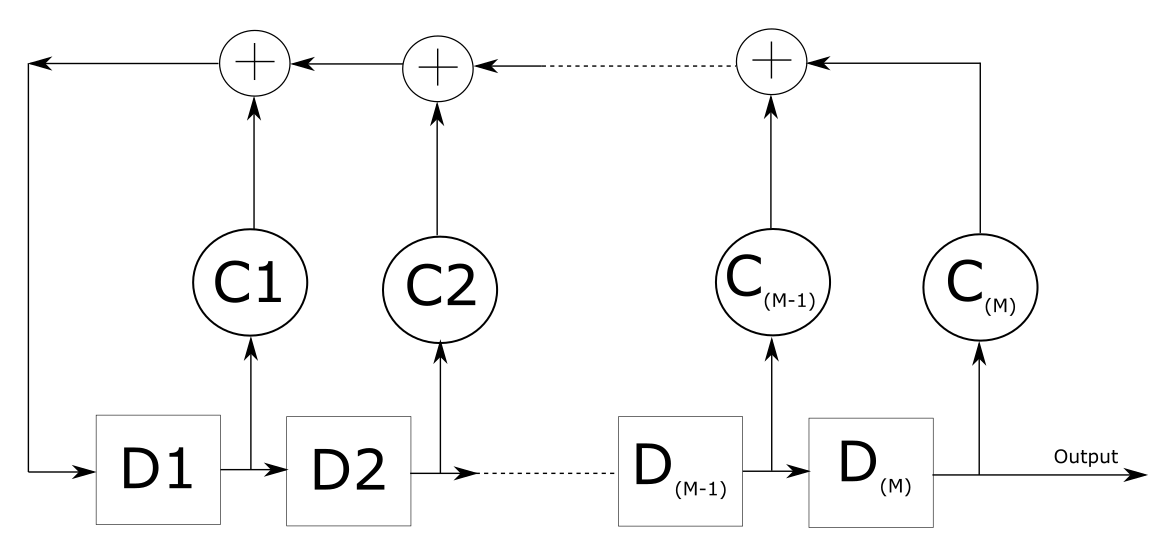Bit Source
Bit Source option allows to generate a binary data sequence used as serial data input for the Constellation mapping. Waveform generator allows two main methods :
Random Sequence
A binary data sequence will be generated randomly each time a new waveform is generated. This sequence will have a length equal to Symbol Count x log2(M) with M corresponding to the number of constellation symbols chosen (e.g: for a 16QAM, M=16 therefore log2(16)=4).
PN (Pseudo Noise) Sequence
A PN data sequence is generated using a linear feedback shift-register circuit, as illustrated below. M is the number of shift registers (PN9, PN15, PN23). D(M) is the mth shift register corresponding to the initial sequence, and {c1,c2,…,cM} are the coefficients of the polynomial used. At each clock pulse, the data in the registers will shift to the right once and one PN data sum is outputted from register D(M)
- PN9
PN9 length is equal to 29-1 = 512bits. The polynomial for PN9 used in the tool is x9+x7+1. The initial sequence for PN9 used in the tool is { 1, 1, 1, 1, 1, 1, 1, 1, 1 }.
- PN15
PN15 length is equal to 215-1 = 32767bits. The polynomial for PN15 used in the tool is x15+x14+1. The initial sequence for PN15 used in the tool is { 1, 1, 1, 1, 1, 1, 1, 1, 1, 1, 1, 1, 1, 1, 1 }.
- PN23
PN23 length is equal to 223-1 = 8388607bits. The polynomial for PN23 used in the tool is x23+x22+x21+1. The initial sequence for PN23 used in the tool is { 1, 1, 1, 1, 1, 1, 1, 1, 1, 1, 1, 1, 1, 1, 1, 1, 1, 1, 1, 1, 1, 1, 1 }.
